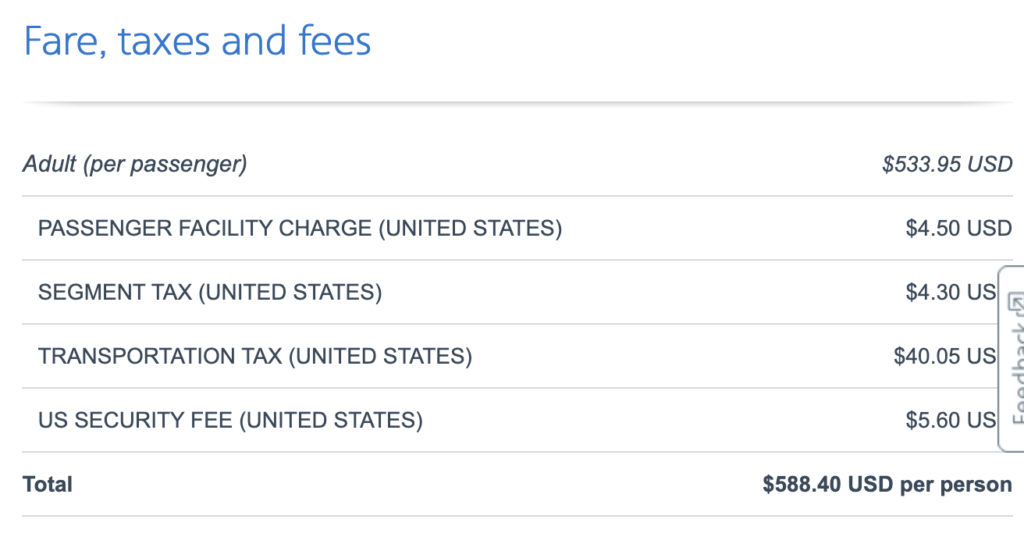Yesterday was a flurry of breaking news. American Airlines drastically revamped its AAdvantage program and how people will earn AAdvantage status. Make no mistake about it, what happened yesterday represented a massive change, not just in numbers and status levels but in the program philosophy as a whole.
I’ve spent time pontificating, ruminating, and [throws away thesaurus] thinking about the new program from a relatively high altitude (pun intended). There will be plenty of time for ground-level specifics of the new program (and I have an email out to American asking for clarification on a big item), but let’s keep things high level for a minute.
[reminder: if you want to see American’s official website detailing the new changes, click here]
Here are some thoughts about the new AAdvantage program
1. The new AAdvantage program provides a rare glimpse into the behaviors American Airlines would like to incentivize the most
Plenty of people have said, rightly or wrongly, that American resembles a credit card marketing company that happens to fly planes. If anyone disagreed with that, this announcement should put the argument to bed for good. American is placing its relationship with its credit card partners, Citi and Barclays, on the same level as their flying on their airplanes. How can I say that? Because the vast majority of customers will have to use both cards and planes to qualify for AAdvantage status in the future.
Make no mistake about it: the credit card element of American’s new AAdvantage scheme is a masterstroke. American, Delta, and United had all previously dabbled with the idea of incorporating credit card spend into their qualification schemes, but nobody went full bore into it like American announced yesterday. American’s co-branded cards are good cards to have but not great cards to spend money on, especially when compared to similar-annual-fee’d cards like the Chase Sapphire Preferred.
Citi and Barclays are critical to American’s bottom line. Neither Citi nor Barclays have announced new benefits or new cards, and yesterday would’ve been a good chance to do it. So why is yesterday’s news a masterstroke? American found a way to get high-spend customers to use their co-branded cards without the card issuers having to provide more premium benefits to earn it. It’s similar to my begrudging admission that the annoying credit card pitch during American flights (which is going to be FAR worse now) makes sense because American flight attendants end up with more money (from referral bonuses) and American isn’t the one paying it. It’s really smart.
American Airlines wants you to spend money on its co-branded cards. Yesterday, they gave you a GREAT reason to do so. The importance of credit card partnerships in the airline industry has never been more transparent.
2. Delta and United should prepare for some awkward conversations with their credit card partners
“Hi, Delta? It’s American Express. Yes, these times are unprecedented. Anyway, not sure if you happened to notice what American is doing to encourage customers to spend money on their co-branded cards, but…”
“United? It’s Chase. Not sure if you read the above joke, but basically the same thing as the hypothetical conversation some idiot blogger guessed is happening over at Delta.”
Airlines are brutally competitive and there’s a lot of following once an airline makes a competitive leap. My tens of long-time readers know I’ve bashed American’s leadership for Leading By Copying And Pasting Whatever Delta Does in the past. It would not surprise me to see similar schemes come out from Delta and United at some point in the near future. The fates of these airlines are just that closely tied to their credit card partners.
3. Pour one out for people who qualify on segments
Until recently, you could qualify for American status based on how many segments you flew (a DFW-LAX-SFO-LAS-DFW itinerary, for example, would be five segments). While it’s easy to say this was American’s way of Honoring The True Road Warriors out there, I think the real reason is it gave people not based at an American hub a reason to put up with all the connections. You don’t want just hub-captive flyers in your frequent flyer program, awarding status based on segments was a good incentive for those who would always have to connect.
Well, all that is gone now. The only reason you need to worry about segments as part of the New AAdvantage is the 30-segment minimum to begin earning Loyalty Choice Rewards. You could fly 200 segments and not earn Executive Platinum under the new scheme. Ouchtown, population: segment flyers
4. Simplicity can be confusing
Is this a simpler way of earning status? I think so? Realistically they’re trading a confusing scheme, where you qualified based on a combination of qualifying dollars + either qualifying miles or segments with a scheme that tries to chuck all of those terms into a blender, add in some credit cards, and call it Loyalty Points.
How is that confusing?
Take the following, for example: in the new AAdvantage program you earn Loyalty Points for every mile you earn flying on American and partners. But those miles are not earned based on the distance you’ve flown. You earn miles for how much your ticket costs, minus taxes and government fees of course, and then you get a bonus with based on your status.
So, here’s what American is calling simplicity: to earn status by flying you need to earn Loyalty Points based on miles earned for how much a ticket costs. But not all of what a ticket costs. Oh, and it might be different for partner airlines.
EQM, EQS, and EQD were confusing, but at least they were relatively consistent across the industry. While American was innovative, they exchanged confusing terminology we understood for simpler terminology that we don’t. It’ll take some time but we’ll get there eventually.
5. If you don’t already have status, earning status without credit card spending will be HARD
Ok, so let’s review, bearing in mind the above.
Loyalty Points = miles earned based on ticket cost less taxes and government fees + status bonus
If you are an AAdvantage member with no status, you will earn five miles/LPs for every dollar you spend on tickets (less taxes and government fees). The taxes and fees can vary, but let’s use the below as an example:
So, for this ticket you would earn 2670 Loyalty Points: the base fare of 534 * status multiplier of 5
Let’s just say that tax percentage remains constant for the rest of this example (ignoring that for international flights it would be much different).
So, if you decided you weren’t going to play along with American’s credit card shenanigans and earn status The Old Fashioned Way, you would need to spend roughly $6600 on tickets to earn…Gold.
The math isn’t realistic. Going from zero status to Gold status will have to include some element of co-branded credit card spending.
Which brings me to my next point:
6. Earning only Gold status based on credit card spending doesn’t really make that much sense
Ok, so you look at the benefits of Gold status and are like “holy CRAP I want that”.
So you get the co-branded card and start spending. But the co-branded card gets you some of the benefits available in Gold already: free checked bag and priority boarding. Yes, Gold status also gets you the chance for upgrades, but if you’re flying on a popular route odds are other people with higher status will get that upgrade before you (same goes for flying standby on an earlier/later flight).
So, to sum up points 5 and 6, having to use a co-branded card to help earn a status that has a pretty high overlap with the benefits that come with the card reduces the incentive in my opinion.
7. Going from Gold to Platinum is a BIG jump, same from Platinum Pro to Executive Platinum
Quick reminder:
- Gold = 30,000 LPs
- Platinum = 75,000 LPs
- Platinum Pro Express Wash with Carnuba Wax (sorry, Platinum Pro sounds like a car wash membership to me) = 125,000 LPs
- Executive Platinum = 200,000 LPs
I think American made Gold really easy to earn while Platinum will take some work. I guess you could say the same for the difference between Platinum Pro and Executive Platinum.
There are almost two general philosophies at play here: existing Platinums shouldn’t have an issue earning Gold but may have a hard time reaching Platinum again. Existing Executive Platinums shouldn’t have a hard time earning Platinum Pro but may have a hard time reaching Executive Platinum again.
Aaaaand my brain hurts, seven points is enough for now
This got technical and in the weeds pretty quickly but I think that’s expected. Heck, look at how much American emphasized “simplicity” with the New AAdvantage and compare it to how many lines of FAQ they immediately published alongside it.
As things become more clear over the next two months before the program launches, it will benefit all of us to understand our status for the next year and begin figuring out what it will take to reacquire that status. Everyone’s calculus will be different, for sure. Some people might not have their faithful business travel to count on in the future since so many are meeting remotely now so they may be permanently moving away from their status. Others will take a wait-and-see approach. I don’t think anyone is wrong no matter what they decide to do, I just worry about people spending money they don’t need to just to acquire airline status, since it’s so transparently available now.
As in any status program, there will inevitably be sweet spots with the new AAdvantage program. For as much as it seems like it’s The Airlines are winning the battle against Points and Miles Dweebs, an airline has yet to come up with a program impervious to this community’s ability to pick it apart and find the most valuable bits.
We should all stay tuned. The question I have out to American is about the existing earning charts for flights on partner airlines and if they will still apply in the new program (instead of being based on flight cost like on American) and I know there are many bloggers who have sent in questions as well. We will learn more in the days to come. The best thing you can do to prepare for the new AAdvantage is to learn how to learn about it, and you’re doing a great job by visiting this blog 🙂
Those are my thoughts, what are you thinking about with the new AAdvantage program?






Mileage Plan it is!
Well written and encapsulates all of my concerns. I will certainly miss my car wash membership.
Think I will enjoy my Gold as long as I can and then decide which airline to fly.
Any update on million miler benefits? I’ll assume you need a billion now!
No updates, it will still accrue based on butt-in-seat miles only.
What if your credit doesn’t allow for an AA credit card? Perhaps it’s time to consider some sort of “secured” option.
Typo on ticket dollars to earn Gold.
30k LPs @5 per dollar is $6,000 plus taxes and fees, not $33,000
Wow you’re right, oops, thanks for telling me
Thank you. I am EP, but will not be able to keep it under the new program. My understanding is that we have until the end of March 2023 to earn status for the year, but that 2022 status still expires at the end of Jan 2023. Is that correct?
Sorry if I am sending this twice
This is a great article. Thank you. I am EP and will be one who will not be able to keep my status after 2022, as I really relied on segment travel to get there.
One question, though. I understand that we have from Jan 22 to March 23 to earn status for 2023. Does our 2022 status then expire at the end of Jan 23 or at the end of March?
I complained about my inability to reach status ever again as a segment qualifier back in October. AA didn’t care, of course. With the roll out this week, it’s more apparent than ever that after two decades with American, I should start using all of my rewards this year and abandon the program. I have perfectly good credit cards. I don’t need another not very good one.
Sounds like the new AAdvantage program is not helping the flyer out at all. Especially since the segments was removed. Getting to Platinum is basically impossible for 98% of the flying population. Before it was realistic to get Platinum if you were a heavy traveler (4x a month), now you will have to be an elite traveler (10x a month).
This benefits the passengers like myself, that pay for my own tickets and travel for leisure and has AA branded credit cards. Before the program changes the highest I achieved was platinum from the program requirements. Then got platinum pro with a promotional that I had to pay for. However, it was the best money spent because it was the year before COVID and I had platinum pro status for over 2 years because of the FF extensions. Now with the revamped program I actually achieved EXP and as long as the program stays like this will continue to have that status. It definitely benefits those of us that are loyal to flying American and have a good amount of credit card spending.